

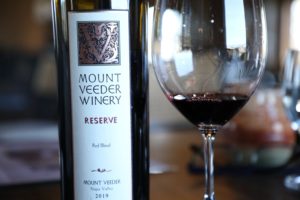 Mount Veeder Winery was founded in 1973 by Michael and Arlene Bernstein. They purchased their first land on Mt. Veeder in 1963, a 20-acre property at 1999 Mt. Veeder Road after seeing it listed as for sale in the Wall Street Journal. The site ranges from 1,000 to about 1,400 feet in elevation. In 1969 they acquired another 14 acres of property, also on Mt. Veeder. They eventually sold their home in the Haight-Ashbury District of San Francisco. Guess who bought it? Musician Graham Nash of the band, Crosby, Stills & Nash.
Mount Veeder Winery was founded in 1973 by Michael and Arlene Bernstein. They purchased their first land on Mt. Veeder in 1963, a 20-acre property at 1999 Mt. Veeder Road after seeing it listed as for sale in the Wall Street Journal. The site ranges from 1,000 to about 1,400 feet in elevation. In 1969 they acquired another 14 acres of property, also on Mt. Veeder. They eventually sold their home in the Haight-Ashbury District of San Francisco. Guess who bought it? Musician Graham Nash of the band, Crosby, Stills & Nash.
The Bernstein’s planted their first vines in 1965. Not gentleman farmers, but also with no background in farming, Arlene and Michael did much of the work themselves with the help of friends and volunteers in the early years. They attribute their initial viticulture knowledge and practices to one of their neighbors, Frank Moyer, part of a pioneer family on the mountain who had built their home and was the former owner of their property. They began to learn as much about the industry as possible, even both working as tour guides beginning in 1971 at the recently opened Robert Mondavi Winery. They were among the earliest of Mondavi’s tour guides.
Margrit Mondavi wrote several books including Reflections on Wine, Food, Art, Family, Romance and Life and Margrit Mondavi’s Sketchbook with co-author Janet Fletcher, both published in 2012. Mondavi makes several references to Arlene and Michael Bernstein in Margrit Mondavi’s Sketchbook; Arlene was also one of the guest contributors to this book. It is interesting to note that currently Constellation owns both Robert Mondavi Winery and Mount Veeder Winery.
Over a span of several years they expanded their vineyard, planting Cabernet Sauvignon, Cabernet Franc, Malbec and they were perhaps the first or among the earliest to plant Petit Verdot in Napa Valley. They also grew Zinfandel and Chenin Blanc. After the vines matured, they were dry farmed and organically farmed. At the time of purchase, the property had a few acres of pasture land and about 15 acres of prunes.
Contrary to what is a very common misperception, the Bernstein’s were not the first to plant grapes on Mt. Veeder. Wine grapes were first planted on Mt. Veeder, by Captain Stalham Wing. The Wing’s land on Mt. Veeder included what is present day Wing Canyon Vineyard; the first recorded Veeder wines date from 1864 when the captain entered 6 bottles into the Napa County Fair along with Charles Krug and several other very early Napa Valley vintners. Other Mt. Veeder pioneers also planted grapes on the mountain in the 1800s through the 1900s.
The namesake for Mt. Veeder was the German Presbyterian pastor, Peter Vroman Veeder who is buried in Tulocay Cemetery in the city of Napa. Veeder was born in Schenectady, New York in 1825; he graduated first in his class at Union College in 1846. He came to Napa Valley in 1856 and in 1858 became the pastor of the Presbyterian Church in the city of Napa. Known for being an educator he served as President of the City College of San Francisco for some years in the 1860s. In 1871 he moved to Japan and taught physics and astronomy at the University of Tokyo where he later served as that school’s dean. For his service in Japan he was awarded by the Emperor of Japan at that time the Order of the Rising Sun. He died in 1896.
The inaugural Mount Veeder Winery wines were a Cabernet Sauvignon from their own property and a Zinfandel from a neighboring property. The first non commercial wine made from estate grapes were four cases of a 1970 Cabernet Sauvignon. The goal in those early years was to produce about 2,000 cases annually. The first commercial vintage was from 1973, 375 cases of their estate Cabernet Sauvignon, Bernstein Vineyards followed by a Zinfandel from the neighboring Simmons Ranch, which was owned by Domaine Chandon at the time. The first three vintages of Cabernet Sauvignon were 100% varietal; and for the 1976 and 1977 vintages, Cabernet Franc and Merlot were blended to the wine. Starting with the 1978 vintage they created a Cabernet Sauvignon that was blended with the following four Bordeaux varieties: Cabernet Franc, Merlot, Malbec and Petit Verdot. They were the first in California to do so.
Making high alcohol Zinfandel is not just a character of contemporary winemaking; their 1977 Zinfandel was listed as 16.4% alcohol. Their 1981 Zinfandel won a gold medal at the Los Angeles County Fair in 1983. Kim Giles was the winemaker in those early years; he was an early winemaker at Domaine Chandon and also later winemaker at the storied Hanzell Vineyards in Sonoma County. Currently he owns a vineyard off of Soscol Ferry Road south of the city of Napa. And Zelma Long also provided winemaking consultation during part of the 1970s. Presumably the Bernstein’s first met Long in the early 1970s when all were employed at Robert Mondavi Winery.
Michael was born in New York City and was raised in Pennsylvania. He taught at Stanford Law School and practiced consumer law in San Francisco for 11 years; for 8 years he and Arlene would commute between San Francisco and their Napa Valley property.
Arlene grew up in Beverly Hills; nearby neighbors were Spike Jones and Dinah Shore. She is a talented artist including photography, and painting and is also an author. She received her Master’s Degree from San Francisco State in photography and later taught a course called Creative Photography at Napa Valley College in the early 1970s. She wrote a book called Growing Season: A Healing Journey into the Heart of Nature about finding solace in her garden after losing three children.
In 1971 according to the October 2, 1971 issue of The Napa Valley Register, Arlene a member of the San Francisco Women Artists, displayed four photographs in a showing at the Focus Gallery in San Francisco. One of the photographs was of winemaker Bob Sessions who was working for Mayacamas Vineyards on Mt. Veeder at the time. Focus Gallery permanently closed in 1985; incidentally this was the same gallery that Jack Cakebread, the co-founder of Cakebread Cellars used to show some of his photography. Arlene’s works focus on primarily people in daily situations. And in 1970 some of her photographs were in an exhibit at the University of Chicago.

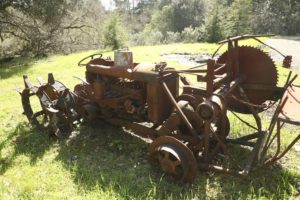
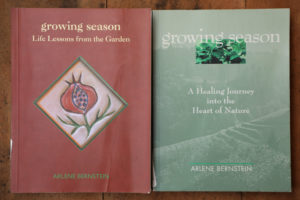 After she and Michael sold Mount Veeder Winery, she returned to school, attended Sonoma State University and earned her master’s degree in psychology. In the late 1980s she became a psychotherapist and opened an office in the city of Napa.
After she and Michael sold Mount Veeder Winery, she returned to school, attended Sonoma State University and earned her master’s degree in psychology. In the late 1980s she became a psychotherapist and opened an office in the city of Napa.
Getting wineries approved in the 1970s was a much easier and simpler process than in contemporary Napa Valley. In August 1972 the Bernstein’s were approved to build an 1,800 square foot winery with a capacity of 6,000 gallons on their Mt. Veeder property. The winery would not be open to the public due to its remote location, but would be able to see visitors by appointment. The three level winery was completed in time for the 1973 harvest.
After 10 years of ownership, in 1983 the Bernstein’s sold their winery to Henry and Lisille Matheson, a couple from Miami, Florida. Henry’s great grandfather originally settled in this part of Florida; his grandfather William Matheson was a prominent resident Dade County and owned most of the land on Key Biscayne. Land he donated became Matheson Hammock Park in 1930, Dade County’s first public park.
According to an article in the August 25, 1984 issue of the Napa Register, Henry’s background was in real estate and construction; he made his first wine from coconuts growing on his grandfather’s farm. The couple had first looked at purchasing a winery on the east coast, but never found anything which suited their interest. At the time of the sale, 18 acres of vineyards were producing. The Matheson’s packed up all their belongings and a young daughter and moved to Mt. Veeder that same year. But their ownership only lasted about 6 years.
In June of 1989, the Matheson’s sold the winery to Augustin Huneeus (co founder of Quintessa Winery). Franciscan Winery was already under Hunees’s ownership with his business partner at the time, the Peter Eckes family from Germany.
At the time of the 1989 sale the Mount Veeder Winery was producing 4,500 cases of Chardonnay and Cabernet Sauvignon each year. The sale included both the inventory, the winery and 90 acres on Mt. Veeder of which 23 were planted to vines at the time. Winemaker Peter Franus who started at Mount Veeder Vineyard in 1981 stayed on as winemaker through the 1985 vintage.
And in 1999, Constellation Brands purchased Franciscan Winery which also included Mount Veeder Winery. Based in upstate New York, Constellation Brands is still the current owner of Mount Veeder Winery.
Three separate vineyards on Mt. Veeder are under their ownership including The Winery Ranch, the original home of the Bernstein’s and their first winery, the North Ranch, replanted in the 1990s and the Rosenquist Ranch. Two of the properties were acquired by the Bernstein’s and the third 40-acre property was acquired during the Matheson’s ownership.
Select Wines
The 2021 Mount Veeder Winery Chardonnay Napa Valley was barrel fermented and aged for nine months in 50% new French oak barrels. This wine is deep gold; the bouquet is initially a bit shy and needs some time to open in the glass. It offers a honeyed note including of honeycomb, ripe pineapple, melting butter, ripe mango, vanilla and corn tassel. The palate is creamy and shows a noticeable weight. This wine sports flavors of melon, caramel, pineapple and ripe stone fruits including yellow nectarines, peaches and apricots. Clean finish. The oak is a complementary character here rather than a dominating one. Balanced acidity. Pair with a creamy white pasta.
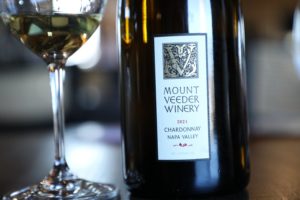 The 2019 Mount Veeder Winery Reserve, Red Blend is 80% Cabernet Sauvignon, 10% Cabernet Franc, 6% Malbec and 4% Merlot. This wine was aged for 20 months in 100% new oak barrels. It is deep ruby; the initial aromatic we noted was a sweet tobacco spice. And there are scents of old cedar box, baking spices including clove and nutmeg, dark plum and black cherry. As the wine evolves in the glass two aromatic characteristics become more pronounced including its core of fruit along with notes of cocoa powder and mocha. Bright and balanced, its reveals both red and darker fruit flavors including of cherry, plum and currant. We really like the textural feel of the tannins here; they are integrated, seamless and sport a chalky character on the finish. And it also lingers with a note of dried tobacco. This wine showcases the Mt. Veeder freshness very well. Pair with a medium rare filet mignon.
The 2019 Mount Veeder Winery Reserve, Red Blend is 80% Cabernet Sauvignon, 10% Cabernet Franc, 6% Malbec and 4% Merlot. This wine was aged for 20 months in 100% new oak barrels. It is deep ruby; the initial aromatic we noted was a sweet tobacco spice. And there are scents of old cedar box, baking spices including clove and nutmeg, dark plum and black cherry. As the wine evolves in the glass two aromatic characteristics become more pronounced including its core of fruit along with notes of cocoa powder and mocha. Bright and balanced, its reveals both red and darker fruit flavors including of cherry, plum and currant. We really like the textural feel of the tannins here; they are integrated, seamless and sport a chalky character on the finish. And it also lingers with a note of dried tobacco. This wine showcases the Mt. Veeder freshness very well. Pair with a medium rare filet mignon.
The iconic looking label was designed by artist David Lance Goines (died in late 2023). He created images for a number of wineries including Merry Edwards, Ravenswood and Bedrock WineCo. He also designed anniversary posters every year for Chez Panisse Restaurant in Berkeley. Some of his lithograph illustrations are on display at the Kathleen Thompson Hill Kitchen Memories Collection at Elizabeth Spencer Winery in Rutherford.
Hospitality
Beginning in 2023 to celebrate the 50 anniversary of Mount Veeder Winery, tastings of the Mount Veeder Winery wines are hosted in the To Kalon Collective room within Robert Mondavi’s hospitality space in downtown Napa. Arch & Tower is named homage to the iconic arch and tower at Robert Mondavi Winery. This handsome stone building is 9,600 square feet and is one of the oldest commercial buildings in downtown Napa. For reference, the oldest building in downtown Napa is the 1875 built Pfeiffer Building which currently houses Vintner’s Collective.
In addition to being able to taste the Mount Veeder Winery wines, several other wines under Constellation Brands ownership can also be tasted here including, Schrader Cellars, To Kalon Vineyard Company, and Double Diamond.
Prior to this, the Mount Veeder Winery wines used to be tasted at the old Franciscan Winery, which permanently closed in October 2017 and reopened later in 2018 as reimagined space for The Prisoner, also owned by Constellation Brands.

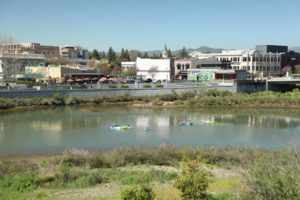 A building standing for this length of time has significant history. Borreo purchased the site in 1877 from James Donnelly and Chancellor Hartson; Hartson was a prominent figure in Napa who also founded Aetna Springs Resort. Borreo constructed the building from stone quarried from Soda Canyon and operated it as both a grocery and supply store until 1908 when he sold it to James Rennie. Incidentally, Rennie and his brother William founded Rennie Brothers Winery in St. Helena, much later home to Flora Springs Winery and how home to Cathiard Vineyard. Borreo also owned a winery in Soda Canyon, now on property owned by Silverado Vineyards; the original winery structure was destroyed during the 2017 Atlas Peak fires. The southeast corner of Third and Soscol (across from the Borreo Building) used to be home to the city of Napa’s finest lodging, the Palace Hotel built in 1875. Their livery stable was eventually located next to the Borreo Building.
A building standing for this length of time has significant history. Borreo purchased the site in 1877 from James Donnelly and Chancellor Hartson; Hartson was a prominent figure in Napa who also founded Aetna Springs Resort. Borreo constructed the building from stone quarried from Soda Canyon and operated it as both a grocery and supply store until 1908 when he sold it to James Rennie. Incidentally, Rennie and his brother William founded Rennie Brothers Winery in St. Helena, much later home to Flora Springs Winery and how home to Cathiard Vineyard. Borreo also owned a winery in Soda Canyon, now on property owned by Silverado Vineyards; the original winery structure was destroyed during the 2017 Atlas Peak fires. The southeast corner of Third and Soscol (across from the Borreo Building) used to be home to the city of Napa’s finest lodging, the Palace Hotel built in 1875. Their livery stable was eventually located next to the Borreo Building.
Felix Borreo is listed in the 1878 Business Directory as having a grocery store on 1st Street and 100 acres of farm (City Directory 1878 p.138). An advertisement from 1879 further clarifies his business location as on the corner of 1st and Railroad. And we have seen several articles from the Napa Register during the late 1880s referencing a Borreo Building located on the corner of Main and Second Streets. Obviously, he owned several businesses in downtown Napa.
An article in the Napa Weekly Journal dated June 23, 1887, references Felix Borreo finishing a two-story stone warehouse in ‘east Napa’ with a wharf to be built directly behind the building. Two years later, the City Directory lists Felix Borreo as a warehouse owner, grape grower, farmer and distributor. His warehouse in East Napa (3rd & Soscol) and the current home of Arch & Tower originally dealt in grain and feed, wood and coal, groceries, wines and liquor.
Over the decades the Borreo Building has housed numerous tenants ranging from the Napa Boat Club for a boathouse, Cameron Shirt Factory was established here in 1902, A. Repsold Co., operated here with a wine cellar in 1913 with the name Castle Rock Vineyard on the exterior (the wines were made at Castle Rock Vineyard, now the site of Yates Family Vineyards) and were bottled and shipped from the Borreo Building, it was used for wine and liquor storage by Ernest Streich and F. Vanzini and in the late 1930s was home of J.C. Tyther – a wholesale distributor of beer and wines. By the early 1940s the upstairs was home to By-Rite – a furniture warehouse with the slogan, “climb the stairs and save” while the first floor was home of Vanderschoot & Mansfield Oldsmobile.
For several years starting in the late 1940s the upstairs was rented by the California National Guard, it was known as the Egyptian Hall in the 1960s and hosted a number of social events for local organizations including dancing, into the late 1980s the building was home of Holmes Moving & Storage and for about 15 years until 2001 was occupied by Cartons & Crates, a still in existence moving and shipping company focusing on the wine industry. The building suffered moderate damage in the August 2014 Napa earthquake and underwent repairs, renovation and building strengthening, all of which was completed in 2018.
For more information, to purchase wines or to schedule a tasting, please visit: www.mtveeder.com






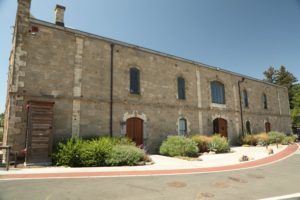
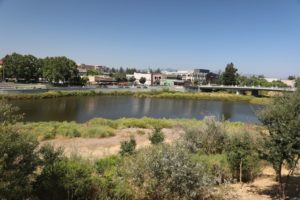
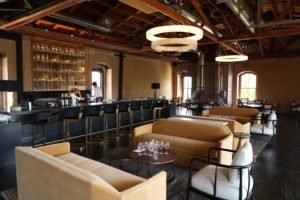
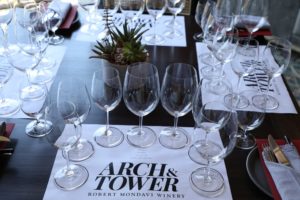
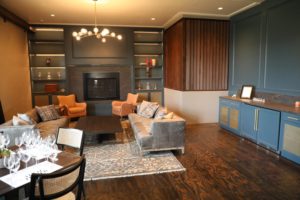
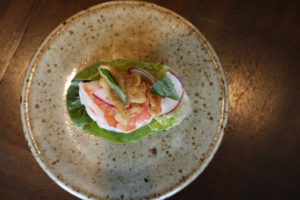
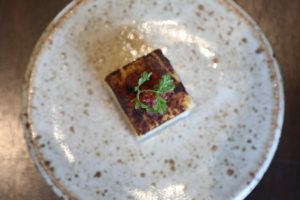
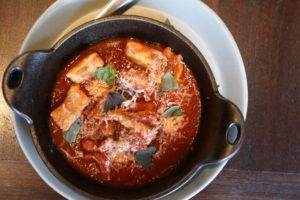
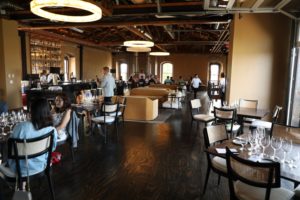
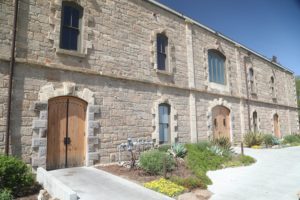
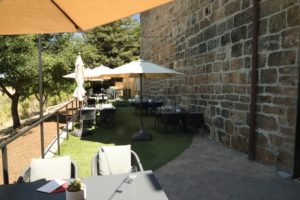
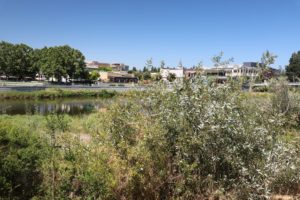
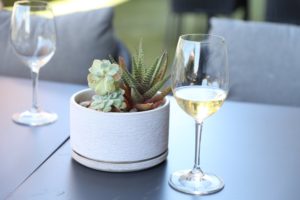

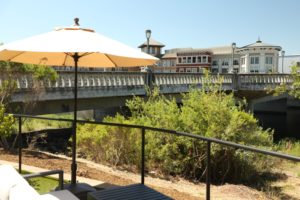
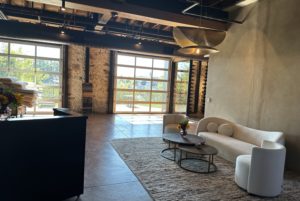
Leave a Reply